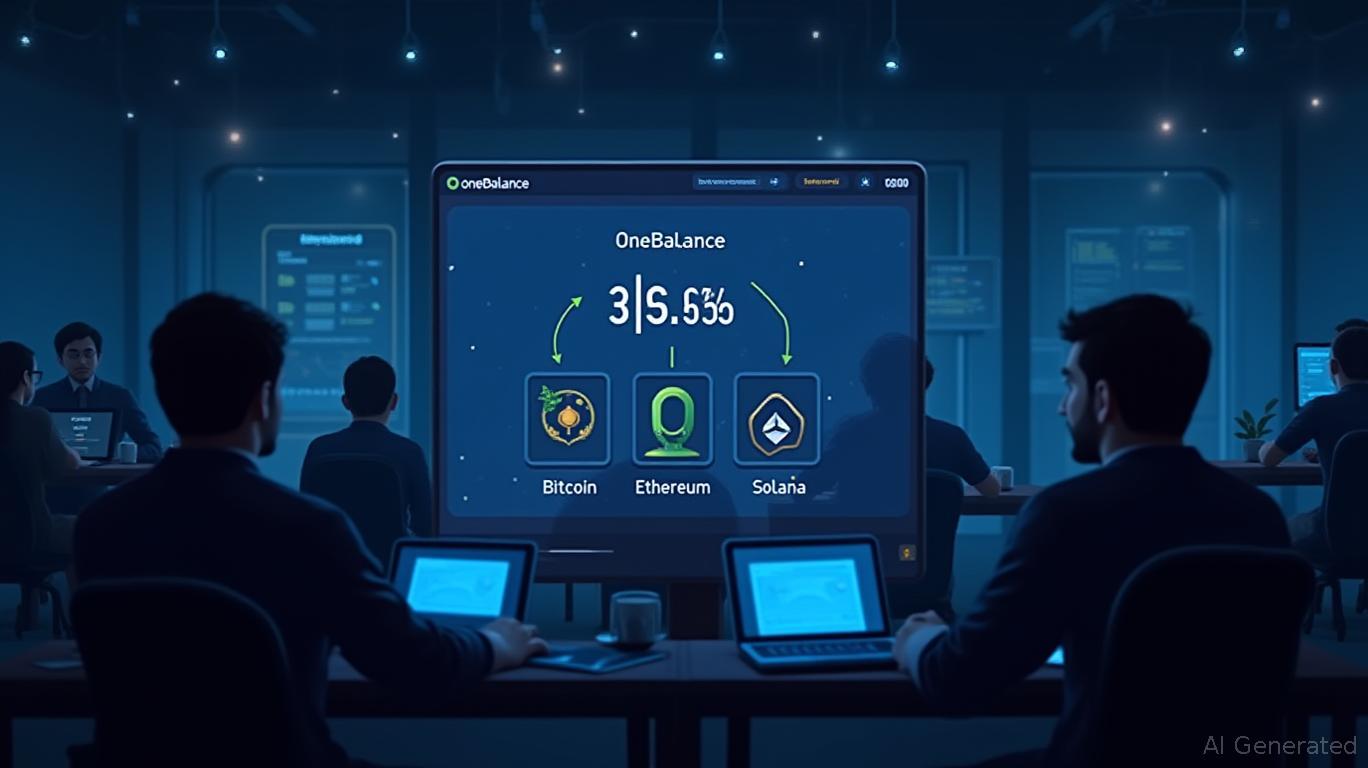OneBalance's Cross-Chain Breakthrough: Can Developer-Friendly Infrastructure Drive Crypto's Mainstream Leap?
The blockchain industry's promise of a borderless, interoperable financial system remains stifled by a glaring reality: fragmented networks. Moving assets between Bitcoin, Ethereum, and Solana requires technical know-how, exorbitant fees, and patience for slow confirmations. For crypto to achieve mainstream adoption, these barriers must vanish. Enter OneBalance, a startup that just secured a $20 million Series A to weaponize developer tools as the bridge to mass adoption.
The Series A Funding: A Vote of Confidence in Cross-Chain Infrastructure
OneBalance's June 2025 funding round—led by Cyber Fund and Blockchain Capital, with participation from
Ventures (Bybit) and L2IV—marks a significant milestone. The $20 million round (following a $5 million seed in 2024) underscores institutional belief that cross-chain infrastructure is the next frontier for crypto's growth. . This capital will fuel team expansion and enhancements to its flagship product: the Toolkit, a developer API that abstracts cross-chain complexity into a single, intuitive interface.The Toolkit: Democratizing Cross-Chain Transactions
The Toolkit's core innovation, Resource Locks, tackles the root of cross-chain friction. Traditional bridges require sequential steps: lock assets on Chain A, wait for confirmation, then unlock on Chain B. This process is slow, costly, and risky, as evidenced by $600 million stolen from the Ronin Bridge in 2022. OneBalance's patented solution eliminates these bottlenecks by enabling parallel execution. Cryptographic “commitments” lock assets simultaneously across chains, while a decentralized verification network (like SEDA) ensures security. The result? Transactions are 40% faster and cheaper than legacy methods, with 100% simulated completion rates.

For developers, the Toolkit offers a single API to manage cross-chain swaps, transfers, and yield generation. Features like gas abstraction (users pay one fee, not multiple gas tokens) and unified balance aggregation (e.g., $50 USDC across three chains appears as a single balance) reduce onboarding hurdles. Partnerships with platforms like Spritz Finance and Vooi demonstrate real-world traction, while SDKs for wallet-as-a-service providers (Privy, Turnkey) signal ecosystem expansion.
Why This Matters for Mainstream Adoption
The Toolkit's value proposition is clear: developers don't have to build cross-chain infrastructure from scratch. Instead, they can focus on user-facing features—like one-click swaps or instant payments—knowing the backend works seamlessly. This lowers the barrier for fintech firms, DeFi platforms, and even traditional banks to integrate blockchain without technical debt.
Consider the implications: A consumer could send Bitcoin to an Ethereum-based app, or earn yield on Polygon without ever navigating gas fees. The fragmented experience that alienates non-technical users disappears, replaced by a Web2-like simplicity. OneBalance's vision isn't just to connect chains but to make cross-chain activity invisible to end-users.
Competitors and Differentiators
OneBalance isn't alone. Rivals like Particle and Socket also aim to simplify cross-chain interactions, but OneBalance's edge lies in its patented Resource Locks and developer-centric focus. Unlike competitors that prioritize user-facing apps, OneBalance targets the plumbing: solving the “under-the-hood” issues that deter developers from building on fragmented networks.
Risks and Challenges
Success hinges on execution. Technical risks include ensuring solver networks (which bid to execute transactions) remain decentralized and that verification systems like SEDA scale without bottlenecks. Regulatory scrutiny—particularly around cross-chain custody and security—could also slow adoption.
The Investment Case
Investors should view OneBalance as a play on cross-chain adoption. Its Series A signals strong institutional demand, while partnerships with major platforms (Circle, Uniswap) suggest early product-market fit. For crypto investors, OneBalance's toolkit could become a critical layer in the stack powering Web3's next phase. For traditional investors, it's a bet on the idea that blockchain interoperability is a prerequisite for mass crypto use—and that OneBalance's infrastructure will be the go-to solution.
Conclusion
OneBalance isn't just solving a technical problem; it's addressing crypto's existential challenge. Without seamless cross-chain interaction, blockchain remains a niche experiment. The Toolkit's potential to eliminate friction for developers—and by extension, end-users—makes it a linchpin for crypto's mainstream leap. For investors, the Series A funding is a starting gun: those backing OneBalance today may be investing in the infrastructure that finally unites the blockchain world.
Investment advice: OneBalance's success depends on developer adoption and real-world usage. Monitor partnerships, SDK downloads, and transaction volume metrics. For crypto-native investors, this is a high-risk, high-reward opportunity; for traditional allocators, it's a thematic play on blockchain's future.

Comments
No comments yet